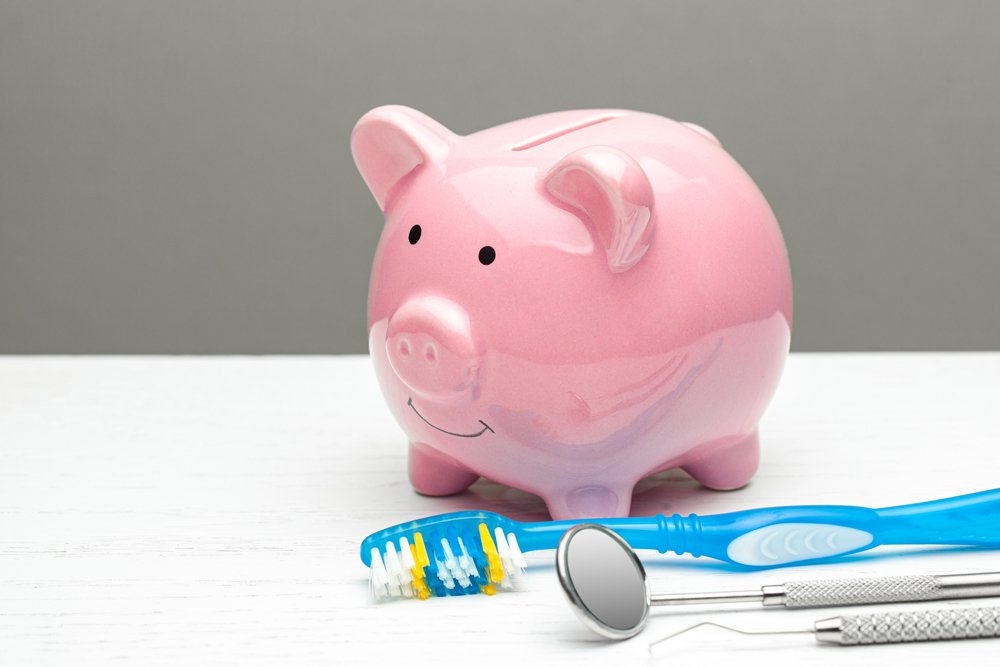Guide to Understanding Dental Insurance for Dummies
Dental care is vital for more than just aesthetic reasons. Despite its significant role in our well-being, the path to a healthy mouth often comes with daunting financial barriers. The cost of routine check-ups, cleanings, and unexpected dental procedures can quickly add up, leaving many to wonder how they can afford the care they need without breaking the bank.
This is where dental insurance comes into the picture. But let's face it, for most people, dental insurance can seem like a maze of confusing terms and conditions – a puzzle in its own right.
After reading this beginners’ guide to understanding dental insurance, you’ll be able to make smarter, more informed decisions about how to pay for dental work.
Types of Dental Insurance Plans
To start, understanding the different types of plans available can help you choose the best option for your teeth (and your wallet).
Dental Health Maintenance Organizations (DHMOs)
When exploring dental insurance, one of the options you might encounter is the Dental Health Maintenance Organization, commonly known as a DHMO. This type of plan operates on a network basis, where patients select a primary care dentist from a list of providers within the organization's network.
Upon choosing a primary dentist, all of your dental care needs are coordinated through this provider. If you require specialized services (i.e. orthodontics or oral surgery), your primary dentist will refer you to a specialist within the network. The emphasis here is on preventive care, and many DHMO plans offer low or no copayments for routine services like cleanings, exams, and X-rays.
Preferred Provider Organizations (PPOs)
Another popular type of dental insurance plan is the Preferred Provider Organization, or PPO. This plan offers a balance between flexibility and cost savings, making it a favored choice for many seeking dental coverage.
PPO plans are built around a network of dentists who agree to provide dental services at negotiated rates. As a member of a PPO plan, you have the freedom to choose any dentist, both within and outside of the network — but you'll save money by opting for a network dentist due to the lower negotiated rates.
When you receive dental care from a network provider, you typically pay a certain percentage of the reduced rate (known as coinsurance), and the insurance company pays the remainder. PPO plans often come with an annual maximum benefit limit and a deductible that you must meet before the insurance company starts paying for services.
Indemnity Plans
Indemnity plans, often referred to as "traditional" dental insurance, provide a level of autonomy that is unmatched by other types of dental plans. These plans are based on a fee-for-service model that offers the greatest flexibility in terms of dentist selection.
With an indemnity plan, you have the freedom to visit any dentist you choose. There are no networks to worry about, and no need for referrals when seeking specialized care. After your dental visit, you pay the dentist directly and then submit a claim to your insurance company for reimbursement. The insurer will pay you back for covered services according to a percentage specified in your plan, up to the plan's coverage limit.
Indemnity plans typically involve a deductible that you must pay out-of-pocket before the insurance company begins to cover costs. After the deductible is met, the insurance company will cover a portion of the fees for services based on a UCR (Usual, Customary, and Reasonable) fee schedule, which is determined by the insurer to represent fair market rates for dental services in your area.
Discount or Referral Dental Plans
Discount or referral dental plans are an alternative to traditional dental insurance that can help manage the costs of dental care. These plans are not insurance; rather, they work as a membership program that provides access to a network of dentists who have agreed to charge reduced rates to plan members.
When you join a discount dental plan, you pay an annual or monthly membership fee. In return, you gain access to a list of dentists who participate in the plan. These dentists provide dental services to members at discounted rates, which are typically a percentage of their usual charges. You simply show your membership card at the time of service to receive the discount.
There are no claims to file, no waiting periods, and no annual limits on use. You pay the discounted fee directly to the dentist at the time of your visit, which simplifies the payment process and eliminates the need for reimbursement.
Government Programs: Medicaid and CHIP
For many families, government programs like Medicaid and the Children's Health Insurance Program (CHIP) provide essential dental coverage. These programs are designed to assist those who may not have access to dental insurance through the private market due to income or other qualifying factors.
Medicaid is a joint federal and state program that offers health coverage to millions of Americans, including eligible low-income adults, children, pregnant women, elderly adults, and people with disabilities. Medicaid coverage (including dental benefits) varies from state to state, with some states providing comprehensive dental coverage and others offering limited or emergency-only services.
CHIP provides health coverage to eligible children, through both Medicaid and separate CHIP programs. CHIP is designed to cover uninsured children up to age 19 whose families earn too much to qualify for Medicaid but too little to afford private coverage. Like Medicaid, dental coverage under CHIP varies by state but generally includes a range of services from routine check-ups to more complex procedures.
Understanding Coverage: What's Included and What's Not
Knowing the specific care that’s covered is a crucial step in understanding dental insurance. Here's a breakdown of what you can generally expect in your coverage plan.
Preventive Care
Preventive care is the cornerstone of dental health, and most dental insurance plans prioritize these services due to their importance in preventing more serious and costly dental issues down the line.
- Routine exams and cleanings: Most plans cover 100% of the cost of biannual check-ups and cleanings, as these are essential for maintaining oral health.
- X-rays: Necessary diagnostic X-rays are typically covered because they help dentists detect problems that can't be seen during a visual exam.
- Sealants: Many plans cover sealants for children and teenagers, as they can prevent decay in the grooves of the back teeth.
Basic Procedures
Basic procedures are typically covered by dental insurance, but usually at a lower percentage than preventive care, often around 70-80%.
- Fillings: When cavities occur, fillings are a common method of restoring the tooth, and are usually covered by insurance.
- Extractions: The removal of teeth, whether due to decay, disease, or injury, is considered a basic procedure and is generally covered.
- Periodontal treatment: Treatments for gum disease, such as scaling and root planing, are often covered because gum health is vital to overall oral health.
Major Procedures
Major procedures are usually covered at a lower rate than preventive and basic services, often around 50%. These treatments are more expensive and involve more complex dental work.
- Crowns: When a tooth is heavily damaged, a crown may be necessary to restore its shape, size, and strength.
- Bridges: Dental bridges are used to replace one or more missing teeth and are typically covered by insurance.
- Dentures: Full or partial dentures are covered under most dental plans as they are essential for those who have lost their natural teeth.
- Orthodontics: Coverage for orthodontic treatment, such as braces, varies widely. Some plans may include it, while others offer it as an optional add-on.
Cosmetic Dentistry
Cosmetic dentistry focuses on improving the appearance of teeth, gums, and/or bites. These procedures are generally not covered by dental insurance as they are considered elective.
- Veneers: Veneers are thin shells designed to cover the front surface of teeth to improve appearance.
- Teeth whitening: Professional whitening procedures to brighten and whiten teeth.
- Dental Bonding: The application of tooth-colored resin in dental bonding is used to improve the appearance of discolored or chipped teeth.
Key Dental Insurance Terms Explained
Dental insurance policies come with their own language, full of terms that can be plenty confusing when you’re figuring out how to pay for dental work. Understanding these terms is essential to making the most of your coverage and avoiding unexpected costs.
Deductible
The deductible is the amount you pay out-of-pocket for dental care before your insurance begins to cover its share of the costs. For example, if your deductible is $200, you'll need to pay that amount directly to your dentist before your insurance kicks in. Deductibles can vary widely between plans and are typically reset annually.
Co-payment
A co-payment, or co-pay, is a fixed amount you pay for a dental service at the time of treatment. For instance, your plan may require a $30 co-pay for each office visit, regardless of the procedure performed. Co-pays are a common feature of DHMO plans and are paid in addition to any deductibles or co-insurance.
Co-insurance
Co-insurance is your share of the costs of a dental service, expressed as a percentage. It kicks in after you've paid your deductible. If your insurance covers 70% of the cost of a procedure, your co-insurance would be the remaining 30%. When a filling costs $100 and you've met your deductible, you would pay $30, and your insurance would cover the remaining $70.
Out-of-pocket maximum
The out-of-pocket maximum is the most you'll have to pay for covered dental services in a policy period (usually one year). After you reach this limit, your insurance will pay 100% of the covered costs for the rest of the policy period. This feature protects you from very high costs but is not as common in dental insurance as it is in health insurance.
Waiting period
A waiting period is the length of time you must wait after starting a new dental insurance policy before you can use certain benefits. Waiting periods can apply to different types of services — such as basic procedures or major work — and can range from a few months to a year or more. Not all plans have waiting periods, but they are something to watch out for when choosing a plan.
Annual maximum
The annual maximum is the maximum amount your insurance will pay for covered dental services within a given policy year. Once you reach this limit, you'll have to pay for any additional dental care out of pocket. Annual maximums can vary greatly between plans and can affect your decision on whether a plan meets your dental care needs.

How to Choose the Right Dental Insurance Plan
The next chapter in our guide to understanding dental insurance covers selecting the right dental insurance plan. With a myriad of options available, it's important to approach this choice methodically.
Step 1: Assess Your Dental Care Needs
Consider your past dental history, any ongoing treatments, and potential future procedures. If you have children, think about orthodontic care or pediatric dentistry services they may require. For those with a history of dental issues, a plan with comprehensive coverage for major procedures might be necessary. On the other hand, if you generally have good oral health, a plan focused on preventive care may suffice.
Step 2: Compare Plan Benefits and Limitations
Look closely at what services are covered, including preventive care, basic procedures, and major services. Also, be sure to examine the details regarding deductibles, co-payments, co-insurance, or annual maximums. Some plans might offer attractive premiums but have significant limitations when it comes to the treatments covered.
Step 3: Consider Network Size and Accessibility
A larger network means more options for choosing a dentist and usually better chances of finding a provider close to home or work. If you already have a preferred dentist, check to see if they are included in the plan's network. Out-of-network costs can be substantially higher, so network size should never be overlooked.
Step 4: Understanding the Claims Process
Finally, familiarize yourself with the claims process. A straightforward claims process can save you a lot of time and frustration. Some plans offer direct payment to providers, while others may require you to pay upfront and submit claims for reimbursement. Consider how claims are filed, the typical turnaround time for processing, and the ease of following up on claims.
Alternatives to Dental Insurance
For those who find traditional dental insurance unsuitable or unaffordable, several alternatives can help make dental care more budget-friendly.
Dental Savings Plans
Dental savings plans are membership-based services that offer discounts on a wide range of dental procedures. By paying an annual or monthly fee, members can access a network of dentists who have agreed to charge reduced rates. Unlike insurance, there are no deductibles, no waiting periods, and no annual limits. This can be an excellent option for individuals who need immediate dental work and want to save on out-of-pocket costs.
In-House Dental Membership Programs
Many dental practices offer their own membership programs directly to patients. For a set fee, these in-house programs typically include a certain number of cleanings, exams, and x-rays, along with discounts on other services.
Payment Plans and Financing Options
For those facing expensive procedures or extensive dental work, many dentists offer payment plans or financing options. These plans can break down a large bill into smaller, more manageable monthly payments. Some financing options may even offer interest-free periods, making them an attractive alternative for budgeting larger dental expenses over time.
Dental Insurance Made Simple with Lee Simon!
Here at Lee Simon, our team takes the confusion out of dental insurance with personalized assistance. There are no dumb questions when it comes to securing your dental health! Schedule an appointment today to create a plan built specifically for your needs.


